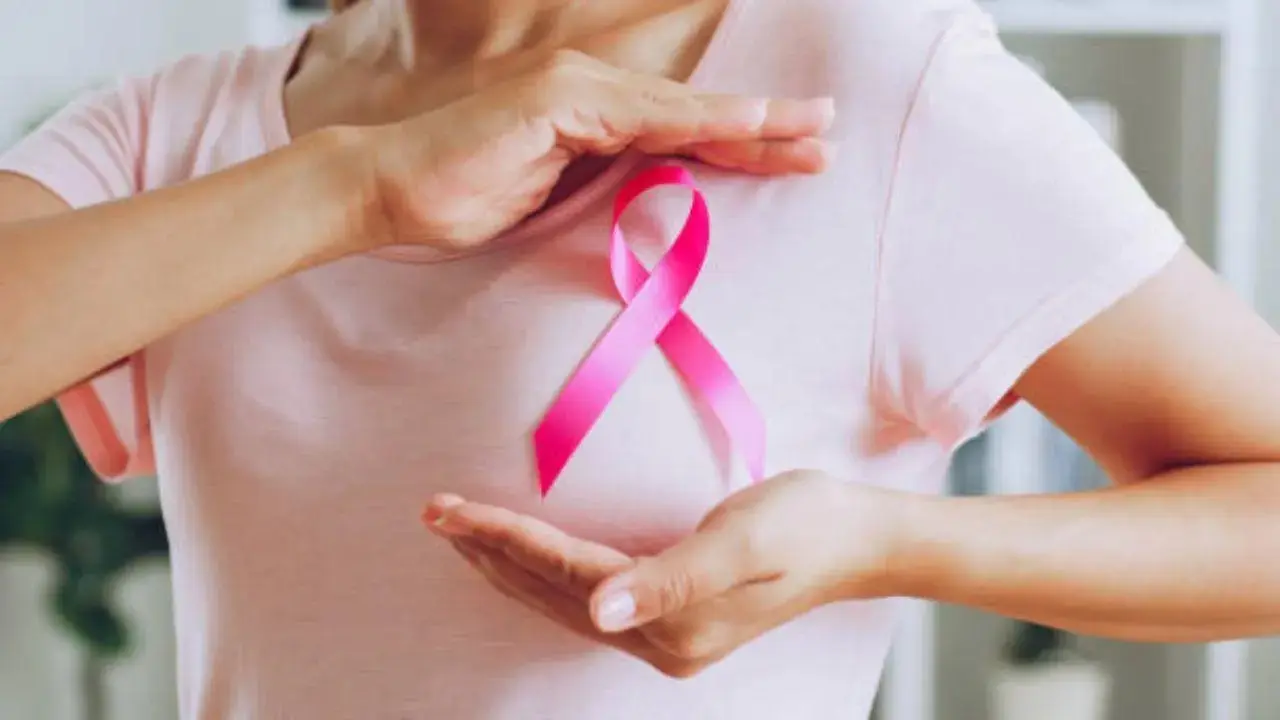The 40s age group marks a pivotal and high-risk decade for women`s breast health. Defined by significant hormonal shifts, demanding careers, and active family lives, this decade requires women to navigate confusing bodily changes while maintaining vigilance for subtle cancer signs. Medical guidance is moving beyond routine screening, emphasising the critical need for women to proactively understand their bodies, know their individual risk profiles, and advocate for personalised care.
While October is observed as Breast Cancer Awareness Month every year, India also observes National Cancer Awareness Day on November 7, and there can never be enough awareness around any type including breast cancer.
The World Health Organization (WHO) underscores the seriousness of this challenge, noting that breast cancer remains the most common cancer among women worldwide. In 2022 alone, an estimated 2.3 million women were diagnosed globally, resulting in approximately 670,000 deaths.
This highlights the importance of early detection and tailored screening protocols, particularly as women enter this high-risk decade. This comprehensive guide, featuring insights from leading surgical oncologists, delves into personal risk assessment, modern self-awareness techniques, the complexities of breast density, and the often-missed red flags—empowering women to take charge of their health during this critical phase.
Assessing your personal risk profile
An accurate risk assessment is the starting point for personalised breast care. Dr Vidhi Shah, consultant, breast oncology surgeon at Kokilaben Dhirubhai Ambani Hospital, Mumbai, stresses the importance of evaluating key factors such as:
1. Family history: Especially first-degree relatives with breast cancer.
2. Reproductive factors: Age at first period and childbirth.
3. Genetic predisposition: The presence of a genetic mutation like BRCA1 or BRCA2.
Shah notes that while only 5 to 10 per cent of breast cancers are genetic, a confirmed mutation significantly impacts screening protocols. She explains, “If someone is BRCA-positive, screening typically starts earlier and follows a more intensive schedule—for example, alternating between a mammogram and an MRI every six months.”
Even without a confirmed mutation, a strong family history may warrant earlier screening. Shah advises, “If a close relative has tested positive or was diagnosed with breast cancer at an early age, screening should begin five years prior to the age at which the relative was diagnosed.” For most women, screening starts at the age of 40, but for those with strong risk factors, it may begin at 35 years or earlier.
The shift to breast self-awareness (BSA)
The method for self-checking has evolved from rigid, monthly checks to a continuous state of Breast Self-Awareness (BSA). Shah clarifies the modern, medically recommended approach, “The modern approach to self-examination focuses on breast self-awareness rather than rigid, scheduled monthly checks. The goal is to understand what is `normal` for your own body so that any new or unusual changes can be detected early.”
These unusual changes include new lumps, thickened areas, size/shape changes, skin dimpling, redness, or nipple discharge. Rather than a fixed day, Shah suggests, “Rather than adhering to a fixed day each month, women are encouraged to check their breasts regularly and intuitively, ideally at a consistent time in their menstrual cycle when hormonal fluctuations are minimal. During the seven days following your period, breast fullness and tenderness are typically reduced, making this the most recommended time to perform a self-examination.”
Hormonal masking and overlooked red flags
The hormonal fluctuations of perimenopause once you turn 40 years and through the decade can be deceptive. Dr Bhavisha Ghugare, senior consultant surgical breast oncology at HCG Cancer Centre in Borivali, highlights how perimenopausal symptoms like breast tenderness and glandular changes can mask malignancy, “Women often attribute changes like fullness, pain, or small nodules to hormonal variations. But what we want women to watch for are non-cyclic changes—those that persist beyond their menstrual cycle.”
Beyond the well-known lump, Ghugare stresses several commonly overlooked red flags, “Often, women overlook signs such as skin dimpling, puckering, redness, or an orange-peel-like texture, which could indicate underlying malignancy. Similarly, nipple inversion, scaling, crusting, spontaneous discharge (especially if blood-stained), or persistent localised pain are red flags.”
Knowing one`s baseline—how the breasts normally look and feel—is key to identifying even small deviations early.
The hidden challenge of breast density
Breast density is a critical, yet often under-discussed, factor in detection, particularly for women in their 40s. Dense breast tissue not only increases cancer risk but can also hide tumours on a standard mammogram because both appear white.
Ghugare explains this ‘masking effect’, “Many women in their 40s have dense breasts due to ongoing hormonal activity. Knowing your breast density is vital—it should be mentioned in your mammogram report. If you have dense breasts, talk to your doctor about what additional screening you might need.”
She emphasises that for women with dense breasts, a strong family history, or genetic predisposition, relying solely on an annual mammogram may not be enough. “Supplemental imaging such as breast ultrasound, digital breast tomosynthesis (3D mammogram), or breast MRI can help detect cancers that a standard mammogram may miss,” Ghugare advises.
Need for self-advocacy
“During an annual health check-up after 40, women should be proactive in discussing their breast health to ensure that screening recommendations are tailored to their individual risk profile. Personalised screening starts with an open and informed conversation with your doctor,” says Shah.
She recommends women to be prepared to ask key questions, including:
1. How to do a proper breast self-exam.
2. Whether genetic testing is appropriate.
3. If screening should begin earlier due to family history.
4. What symptoms warrant immediate medical attention.
5. What should be the recommended frequency of clinical breast examinations or imaging.
Lifestyle modifications
While not all breast cancers can be prevented, lifestyle plays a major role in lowering overall risk. In your 40s, adopting sustainable habits can have a lasting protective impact. Shah notes that lifestyle plays a major role in lowering overall risk. Protective measures include:
1. Avoiding tobacco use entirely.
2. Limiting alcohol consumption.
3. Maintaining a healthy weight and balanced diet.
4. Engaging in regular physical activity (at least 150 minutes of moderate-intensity exercise per week).
Ghugare concludes with an empowering message for women entering this critical decade. She says, “Your 40s are the decade to be breast-aware, not breast-anxious. Listen to your body, track what’s normal for you, and never hesitate to ask for clarity or additional tests. Awareness, not fear, is your best defence.”











